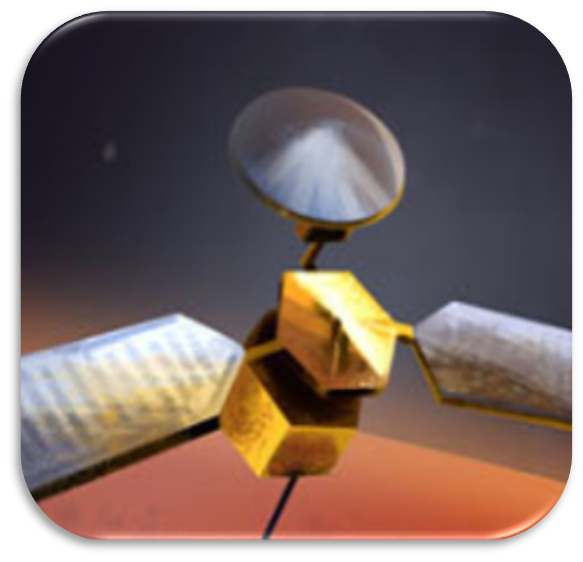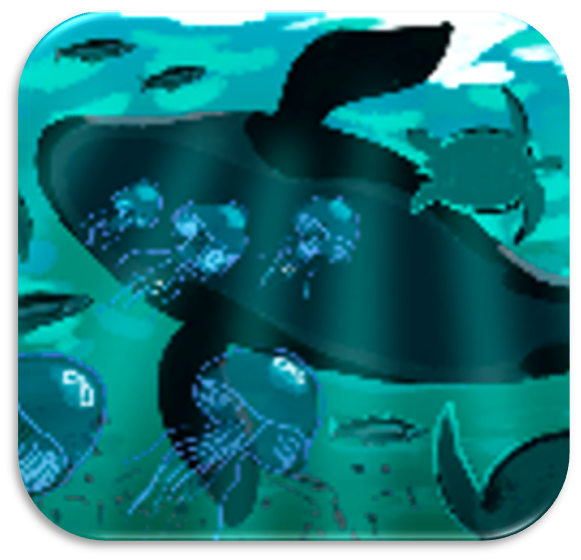- School District of Beloit
- 7th Grade - Science
7th Grade - Science
-
The School District of Beloit has a vision for science education that engages all students in science by working with rigorous, relevant, and real-life problems. We do this through the use of curricular resources that are aligned to the Next Generation Science Standards. These resources encourage students to discover the world around them, in order to provide foundational knowledge to all and encourage all students to continue to learn and to keep wonder alive. The goal of the science program is to prepare our students for their future, which could be very different from the world we live in today. As a result, we have developed a scope that allows students to build upon and revise prior knowledge and encourages all students to engage in the practices of science and engineering.
7th Grade Science Units
-

Unit 1 - Geology on Mars
For thousands of years, people have looked up into the night sky and wondered if we are alone in the universe. As scientists seek the answer to the question, they first look at Earth to examine the conditions that make it a place where living things can survive. Through studying Earth, criteria for habitability have been established. Two important requirements are liquid water and an energy source (such as the sun). When scientists search for evidence of habitability on other planets, they look for these things. In their role as student planetary geologists working to investigate the planet Mars, students will search for evidence of past liquid water on the surface, a necessary indicator of habitability. Students will observe satellite images and Mars rover data as they consider what may have formed a long channel on the surface of Mars, the anchor phenomenon for the unit. Throughout the unit, students consider two possible claims for what may have formed the channel—flowing lava or flowing water. By comparing the channel on Mars to analogous structures on Earth’s surface and in physical models, students are able to gather evidence and evaluate whether it supports the claim that flowing liquid water formed the channel. At the conclusion of the unit, students construct arguments for the claim they think is best supported by the evidence.
-

Unit 2 - Plate Motion
The foundational work for the theory of plate tectonics originated in work done by climatologists who were curious about why the fossil record revealed evidence of organisms, such as tropical ferns, in now-frigid places like Antarctica. The work of Alfred Wegener and other scientists combined to create a model of Earth’s crust and interior that could explain continental movement on a colossal scale and over eons of time. With the emergence of new tools, such as GPS, geologists continue to refine their understanding of Earth and the dynamic tectonic processes that still shape it today. In the role of geologists working for the fictional Museum of West Namibia, your students will investigate a fossil mystery: why are fossils of Mesosaurus, a population of extinct reptile that once lived all together, now found separated by thousands of kilometers of ocean? This mystery serves as the anchor phenomenon for the unit and frames the unit on plate motion, prompting students to understand plates, what happens at plate boundaries, and at what rate changes happen on a geologic scale. After determining that there is a plate boundary between these groups of fossils, students determine whether the fossils were separated suddenly as a result of one geologic event, or slowly over millions of years. Students explore plates and plate boundaries through a series of hands-on investigations and engaging articles and videos featuring real-life scientists. Using the Plate Motion Simulation, students create continents, set plates in motion, and watch what happens. This allows them to see in cross section how the plates and mantle interact at convergent and divergent plate boundaries, observe what geologic events occur when plates move, and investigate what types of landforms form due to different types of plate motion. By the end of the unit, students are able to explain that plates are destroyed and rock is added to plates constantly and slowly (and these processes have been occurring for millions of years) due to large-scale plate movement.
-

Unit 3 - Plate Motion Engineering Internship
Our Earth is constantly changing. Some of Earth’s processes are predictable, while others are not. In the Plate Motion Engineering Internship, students build on their knowledge of plate motion—Earth's crust moves as plates separate, converge, and slide past each other. Shifts at the plate boundaries can sometimes result in earthquakes. Some of these earthquakes, particularly those of very strong magnitudes at convergent plate boundaries under the ocean, cause the displacement of ocean water above, due to the sudden vertical motion of the plates. The displaced water creates a wave known as a tsunami. Tsunami formation, which serves as the anchor phenomenon for the unit, can only happen at certain places on Earth, and these places need special technologies to let them know when a tsunami is coming. The change in plate movement can be detected by seismic sensors, while changes in water levels or water pressure can be detected with other types of sensors. The closer a land mass is to the origin of this type of earthquake, the more quickly the tsunami wave will arrive at its shores and flood the land along the coast. In the Plate Motion Engineering Internship, students will consider the design problem of how to protect people from these natural hazards, using historical data about the frequency of different magnitudes of earthquakes along the plate boundaries in the Indian Ocean region. Specifically, students work as geohazards engineering interns at Futura Engineering to design a tsunami warning system. They will use a digital model to simulate placing earthquake, deep water, and shallow water sensors at various places in the Indian Ocean region in order to maximize the response time people receive to get to safety, minimize the number of false alarms so people don’t become complacent and resources are not wasted from evacuating unnecessarily, and minimize the cost so local governments can afford to install the warning system and maintain it for many years to come. Students complete several tests using the Design Tool, TsunamiAlert, to observe patterns and collect data. By the end of the unit, students will write a proposal persuading their project director that their tsunami warning system design is optimal. They will describe the evidence and rationale for their choices in sensor types and locations, based on the observed earthquake and tsunami activity, their knowledge of plate boundary movement, and the trade-offs they consider in optimizing their design.
-

Unit 4 - Phase Change
Our existence on Earth depends on the abundance of water found here. This water can be found in three different phases: solid, liquid, and gas. Until recently, it was thought Earth was the only place in our solar system with liquid lakes and seas. However, NASA’s Cassini-Huygens mission has discovered the presence of lakes and seas on Titan, one of Saturn’s moons. Similar to liquids on Earth, the liquids in these lakes and seas undergo changes in phase. Unlike Earth, however, these bodies do not consist of water. They are made of hydrocarbons such as methane. In a picture taken by a space probe in 2007, a large lake of liquid methane was detected. In a picture of the same area taken in 2009, the lake did not appear to be there. Upon further testing, a solid was detected. The solid was either solid methane or solid ground that was underneath the lake. NASA scientists wondered if the lake evaporated or froze.
Taking on the role of student chemists working for the Universal Space Agency (a fictional agency), your students will investigate the mystery of the methane lake on Titan. One team of scientists at the Universal Space Agency claims that the lake evaporated while the other team of scientists claims that the lake froze. The apparent disappearance of the lake serves as the anchor phenomenon for the unit, and the students’ assignment is to determine what happened to the lake. Motivated to understand phase change more deeply, students gather evidence from the Phase Change Simulation, from several articles, and from physical investigations of phase change. They learn that the molecules of a substance move differently when that substance is in different phases. They also learn how the kinetic energy of molecules and the attraction between the molecules affects the way in which the molecules move. Students use this newfound understanding of molecules, kinetic energy, and attraction, as well as evidence about the conditions on Titan, to explain what they think happened to Titan’s mysterious lake.
-

Unit 5 - Phase Change Engineering Internship
Every year, thousands of premature and low-birthweight babies struggle to thrive due to lack of access to medical equipment, such as incubators. Low-birthweight babies struggle to keep warm and need support as they gain weight and become able to regulate their body temperatures. In poor or rural areas, access to hospitals with adequate services is often limited or costly. Portable reusable incubators that do not require electricity can make a difference for these newborns. Engineers are designing incubators to address this need, using phase change materials (PCMs). PCMs are substances that transfer energy over a long period of time, while changing between the liquid and solid phases. In the Phase Change Engineering Internship, students build on their knowledge of phase change as they learn about the properties of PCMs through investigations of the temperature plateau, or the period of time in which a phase change occurs but the temperature of the substance does not change, even when energy is being added or removed. Each PCM has different abilities for transferring thermal energy, which affects the amount of time an incubator can warm the baby and the amount of time the incubator can reheat in boiling water. When used in combination, the PCMs can make an incubator that stays warm for several hours. Insulating materials are also important to these incubator designs because they slow the energy transfer from the warm PCMs to the baby and its surrounding environment.
In this Engineering Internship, students play the role of chemical engineering interns at Futura Engineering. They will consider the design problem of how to create an incubator that considers three criteria: keep the baby’s average temperature close to 37°C, minimize the time outside the healthy temperature range, and keep costs low. Students use the BabyWarmer Design Tool to collect and analyze data about their designs, complete iterative tests, and learn about optimizing designs. By the end of this unit, students will compose a written proposal that supports their optimal designs for making an effective portable incubator, while managing the trade-offs among the project criteria.
-

Unit 6 - Populations and Resources
Ecosystems are complex systems; determining what might have caused a change in the size of a particular population is not a straightforward question, but is an important one as population sizes are changing more than ever due to human activities. A population's size can be determined by the availability of its resources, whether it be food, water, habitat, or something else. In this unit, we focus mainly on eating relationships and reproduction as factors that affect a population's size. Understanding how different populations are connected to one another as part of a food web is one key to understanding how changes in one population may affect change in another.
In the role of student ecologists at a research center near the fictional Glacier Sea, students investigate what may have caused a puzzling increase in the size of the moon jelly population there, which serves as the anchor phenomenon for the unit. Using a fictional scenario, based on real jelly increases all over the world, students are motivated to find out more about how the ecosystem is connected, and how changes to one population in the food web might cause changes to another population. Using the Populations and Resources Simulation to gather evidence about how ecosystems work, students learn how different populations affect each other, both directly and indirectly. Students use this newfound knowledge and data from Glacier Sea to determine the most likely cause of the moon jelly population increase as well as engage in scientific argumentation as they model and explain their claim.
-

Unit 7 - Matter and Energy in Ecosystem
The Matter and Energy in Ecosystems unit builds on the understanding developed in the Populations and Resources unit where students learned that the transfer of energy storage molecules, such as starches and fats, is determined by the interactions between consumer and resource populations. While the previous focus was on consumers, this unit expands students’ understanding of ecosystems by considering both living and nonliving components—how its producers, consumers, and decomposers meet their energy needs through the processes of photosynthesis and cellular respiration; how carbon, a key component of those processes, moves between nonliving and living matter; and how sunlight and the atmosphere function within the overall system.
In the role of student ecologists, your students will investigate a fictional failed biodome, which serves as the anchor phenomenon for the unit. The fictional biodome was constructed by a local group of individuals who are not astronauts or scientists, just space fans who hope to live in space someday. The Econauts hired expert ecologists to advise them on the types of plants and animals to include in their biodome. With the advice of these ecologists, the group members hoped their sealed ecosystem would be self-sustaining—plenty of plants for the animals to eat, plenty of sunlight and water for the plants, and plenty of air for both. However, five years into the project, the group noticed that the plants and animals in the biodome were not getting the resources they needed to release energy, and the ecosystem appeared to be failing. The occupants were safely removed from the biodome, but the cause of the ecosystem crash remains a mystery.
-

Unit 8 - Chemical Reactions
Chemists answer questions about what substances are and where they come from. In this unit, students take on the role of student chemists to solve mysteries that can only be solved with an understanding of fundamental chemical principles. The first mystery is a fictional yet realistic scenario in which a reddish-brown substance is coming out of the water pipes in a neighborhood that gets its water from a well. This scenario serves as the anchor phenomenon for the unit. As students learn about what makes substances different in Chapter 1, they apply their growing knowledge of properties and atomic composition to determine that the reddish-brown substance is not the same substance as either the substance that makes up the pipes or the fertilizer that has seeped into the well water. As students learn about chemical reactions in Chapter 2, their explanation builds. Students apply what they have learned about atomic rearrangement to determine that the reddish-brown substance, now identified as rust, could only have formed from a chemical reaction between the iron pipes and the fertilizer. As students learn about the conservation of matter in Chapter 3, their explanation culminates with the conclusion that the reaction between the iron pipes and the fertilizer that formed the rust must also have formed another substance, which must be present in the water. In the last chapter of this unit, students continue in their role as student chemists, working to assist in a police investigation of a robbery that involved the use of an unknown substance to steal a rare and expensive diamond. Students must use their understanding of substances, atoms, and chemical reactions to identify the unknown substance as hydrofluoric acid. They then help the police determine which of their suspects is most likely to have produced this substance.
By the end of 7th Grade, students will...
-
- analyze and interpret data to determine scale properties of objects in the solar system.
- construct an explanation based on evidence for how geoscience processes have changed Earth’s surface at varying time and spatial scales.
- construct a scientific explanation based on evidence from rock strata for how the geologic time scale is used to organize Earth’s 4.6-billion-year-old history.
- analyze and interpret data on the distribution of fossils and rocks, continental shapes, and seafloor structures to provide evidence of past plate motions.
- evaluate competing design solutions using a systematic process to determine how well they meet the criteria and constraints of the problem.
- define the criteria and constraints of a design problem with sufficient precision to ensure a successful solution, taking into account relevant scientific principles and potential impacts on people and the natural environment that may limit possible solutions.
- analyze data from tests to determine similarities and differences among several design solutions to identify the best characteristics of each that can be combined into a new solution to better meet the criteria for success.
- develop a model to generate data for iterative testing and modification of a proposed object, tool, or process such that an optimal design can be achieved.
- analyze and interpret data on natural hazards to forecast future catastrophic events and inform the development of technologies to mitigate their effects.
- develop a model that predicts and describes changes in particle motion, temperature, and state of a pure substance when thermal energy is added or removed.
- develop models to describe the atomic composition of simple molecules and extended structures.
- plan an investigation to determine the relationships among the energy transferred, the type of matter, the mass, and the change in the average kinetic energy of the particles as measured by the temperature of the sample.
- construct, use, and present arguments to support the claim that when the kinetic energy of an object changes, energy is transferred to or from the object.
- analyze and interpret data to determine scale properties of objects in the solar system.
- develop a model to describe the cycling of water through Earth’s systems driven by energy from the sun and the force of gravity.
- define the criteria and constraints of a design problem with sufficient precision to ensure a successful solution, taking into account relevant scientific principles and potential impacts on people and the natural environment that may limit possible solutions.
- apply scientific principles to design, construct, and test a device that either minimizes or maximizes thermal energy transfer.


